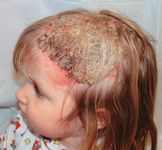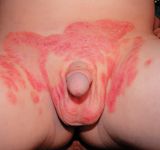- General Dermatology
- Eczema
- Chronic Hand Eczema
- Alopecia
- Aesthetics
- Vitiligo
- COVID-19
- Actinic Keratosis
- Precision Medicine and Biologics
- Rare Disease
- Wound Care
- Rosacea
- Psoriasis
- Psoriatic Arthritis
- Atopic Dermatitis
- Melasma
- NP and PA
- Skin Cancer
- Hidradenitis Suppurativa
- Drug Watch
- Pigmentary Disorders
- Acne
- Pediatric Dermatology
- Practice Management
- Prurigo Nodularis
Article
Biologics promise efficacy, convenience but few studied for indication in children
Charleston, S.C. - Biologic agents for pediatric dermatology offer the promise of being safer and much easier to use than traditional drugs, according to Elaine C. Siegfried, M.D., associate clinical professor of pediatrics and dermatology at St. Louis University School of Medicine, Mo.

Dr. Siegfried, who is also in private practice in St. Louis, notes that many of the drugs and biologics used in pediatric dermatology, and medicine as a whole, have not been studied in children. Therefore, data about the biologic agents in adults is extrapolated and adapted for treating children.
"Pediatricians are used to doing just that with medications for treating children. Up until a couple of years ago, 80 percent of medications had never been studied in children," she says. "For pediatric dermatologists, the great majority of medicines we use to treat kids - even for common diseases like atopic dermatitis - had never been studied for that indication."
"For aggressive treatment in children, my motto is 'Never use a treatment with risks that outweigh those of the disease,' but I also recognize that severe, life-altering disease requires aggressive therapy. Biologic therapies as a whole new group of medication hold the promise to treat severe disease more safely and also more conveniently," she says.

Biologics Biologic therapies are typically large molecules. They are manufactured using biotechnology derived from living sources and include recombinant DNA technology, hybridomas, blood and whole human cells. They are usually administered by injection and have no metabolic drug interactions. They are also comparatively expensive, she notes, due to very high production costs.
Biologic therapies offer the potential for continuous control of chronic disease in adults, as opposed to traditional treatment strategies that are cyclic (Figures 1 and 2). However, in children, data for biologic therapies is lacking.
"In December 2003, the Best Pharmaceuticals for Children Act, which requires testing for new and existing drugs with pediatric indications, was signed into law," Dr. Siegfried says. "The law mandated that any drug that was to be used in children had to be studied in children. The law was signed after efalizumab's (Raptiva, Genentech) approval but before the addition of an adult psoriasis indication for etanercept (Enbrel, Amgen)."
"Most of the data we have on biologics relevant for pediatric skin disease is with Enbrel. It is approved for juvenile rheumatoid arthritis in children down to age 4. The equivalent doses for pediatric psoriasis (if you extrapolate from the adult dose) are 0.4 mg/kg/dose for 25 mg or 0.8 mg/kg/dose for 50 mg, given twice weekly," she says.






